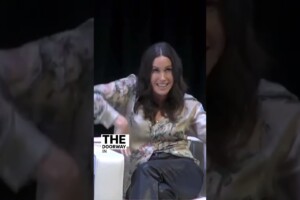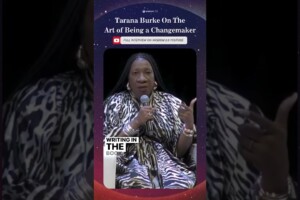
In this article, we’ll explore the connection between mindfulness and art. We’ll also explore how creativity can be used to meditate, including the art of sculpting with Play-Doh. You’ll discover how to use mindfulness art as a tool for creating beautiful works of art. Whether you’re a professional artist or simply a beginner, there are many ways to make your own mindfulness art.
Meditation
The Art of mindfulness meditation is a proven way to reduce stress, improve concentration, and cultivate a sense of peace. It works by developing the innate capacity of attention, enabling you to experience a deeper awareness of your body, mind, and heart. This is particularly helpful if you experience negative thoughts, such as worry, anxiety, or regret.
Mindfulness practices increase our immune systems, enabling us to cope better with stress. It also helps us increase our compassion and altruism, and strengthens brain regions involved in emotion regulation and social cognition. People who meditate often report increased empathy, as well as a better understanding of the suffering of others. In addition, this practice has been linked to a reduction in the production of cortisol, a hormone responsible for the stress response.
Art
Art for mindfulness is a four-part workshop series where participants explore mindfulness and healing techniques through art. They discover that creating art reveals one’s inner state, which can ultimately lead to inner peace. This workshop is taught by mindfulness practitioner and art therapist, Imi Lo. She is the founder of Rolling Oaks Retreat and a former Culture and Arts Education Specialist at the Asian American Resource Center.
The first step to using art to practice mindfulness is to immerse yourself in art. It’s important to take time to notice details and sit with the art. You can do this in silence, just as you would with an old friend.
Meditation through creativity
Meditation can be a powerful tool to increase creativity and focus. It can also help reduce stress, which can be a big contributor to health complications. By lowering cortisol levels, meditation can help promote a calmer state of mind and prevent health complications such as high blood pressure. It also helps prevent inflammatory issues and helps you sleep better.
The key to practicing meditation is to develop the ability to trust one’s intuition. Intuition arises from our unconscious information processing systems and plays a key role in creativity. However, if we question ourselves constantly, we are less likely to follow our intuitions. Creativity requires a sense of spontaneity, and questions about one’s own feelings and actions can thwart this. Once a person develops the ability to trust one’s own judgment, they can use intuition to make the best possible decisions in their lives.
Sculpting with Play-Doh
Sculpting with Play-Doh can be a relaxing and therapeutic activity. It can also bring back memories of your childhood. This activity allows you to connect with your inner child and express your emotions. It can even help you connect with your creative self. The physical and mental stimulation of sculpting allows you to release your emotions.
In order to get the most out of the activity, you can play several games. For example, you can play “Kinesthetic Brain Engagement,” where students create sculptures of various topics related to the class discussion. Then, students work with a partner to reflect on the sculpture.
Mandala drawing
Mandala drawing can be a very therapeutic activity, and is a good way to develop a sense of spirituality. When done regularly, mandala drawing can also increase your mood. The process can induce a state of flow, where you are completely immersed in the activity. This state decreases your external awareness and alters your perception of yourself and your surroundings.
Mandala drawing is one of the most popular forms of art therapy. The concept is ancient and embodies the idea of wholeness and healing. It is particularly effective for helping people with anxiety and depression. It has also been shown to reduce anxiety in cancer patients and those with intellectual disabilities.
Colorful patterns
If you’re looking for an enjoyable way to practice mindfulness, coloring can help. Coloring helps us focus on the present moment while promoting self-regulation. It can also be therapeutic. Learn how to create colorful patterns and find new ways to express yourself through art. The Glasgow Club offers a few tips to get you started.
Drawing is a form of mindfulness art that requires dexterity and concentration. It can help children relax and engage with the world more actively. Here are several art projects for children. These projects are appropriate for ages three to eight. However, adults can also benefit from these activities.
Breathing sticks
Breathing sticks are an easy-to-use tool that helps children learn to control their breathing and become calmer. The tactile tool is made from small pipe cleaners and craft beads, and comes with a mini-poster to remind students how to use it. This tool can be used with children who are already relaxed, or to help children self-regulate their breathing.
Breathing sticks are made by stringing a few small beads onto a pipe cleaner. Students can then practice mindfulness by taking deep breaths to match the movements of the beads. They can also practice moving the beads one by one.
Macrame
If you’re looking for a fun and relaxing way to practice mindfulness, try macrame. This art form has been shown to improve the mind and body, and the repetitive motions involved in the activity can help you achieve this. By engaging all of your senses, you’ll create a meditative atmosphere. This state is known to promote self-confidence, creativity, and emotional regulation. Crafting has also been proven to have antidepressant properties.
Macrame workshops are a wonderful way to spend a day with friends and family, or to create a gift for a special someone. The workshops are held at Southtown Healing + Art, which is located above FloatSTL. Participants learn basic knots and make beautiful macrame plant hangers in a workshop setting. Macrame is also an environmentally friendly art form, so you can feel good knowing that you’re helping the planet while you’re doing it.
Swirling patterns
Swirling patterns are a common motif in mindfulness art. They appear in many forms, and they can help children to learn to focus and relax. Many of these activities are suitable for children aged three to eight, but can also be performed by adults. The key to practicing mindfulness art is to focus on the process and be still.
Mindfulness art can be a wonderful way to improve your health and increase the benefits of mindfulness. Adults can practice mindfulness by coloring mandalas, which are geometric designs and are designed to calm the mind. According to one study, coloring mandalas helped reduce heart rate and blood pressure and reduced anxiety and stress. These results suggest that coloring mandalas is a highly effective way to improve one’s health and wellbeing.
Focusing on your breath
One of the best practices for bringing yourself into a state of mindfulness is to focus on your breathing. You can practice this skill by taking deep belly breaths, counting them from five to eight. You should breathe through your nose, rather than through your mouth, and you should return your attention to your breath once you’ve wandered from it. You should try to remain calm and not judge or obsess over your thoughts while practicing this art.
There are many benefits to practicing correct breathing, including boosting your immune system, reducing stress, and removing toxins. It also helps calm the mind and wards off unhappiness, anxiety, and depression. In fact, studies have shown that practicing mindfulness can prevent and cure depression and improve your overall happiness. Many people also report an increase in their mental clarity and decision-making abilities after practicing this art.





